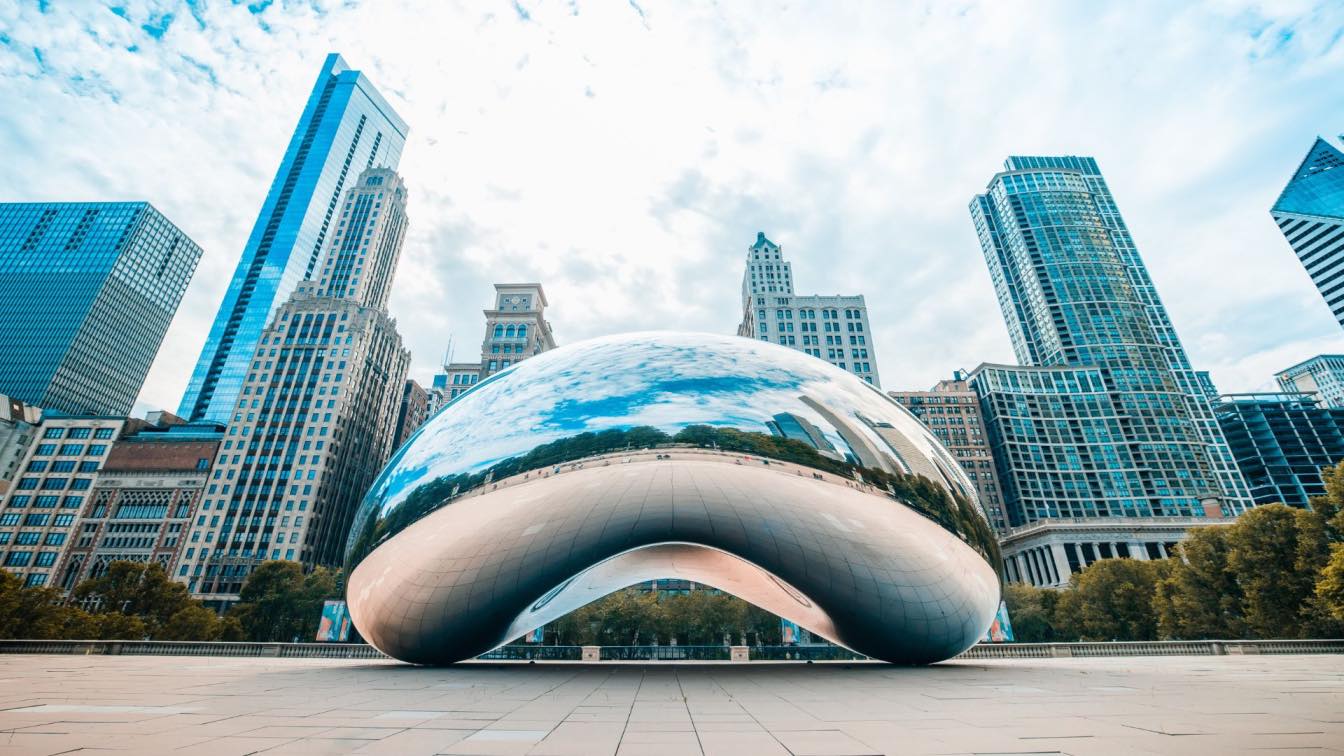
What Makes Chicagoland Architecture So Beautiful and Unique

Chicagoland is a region rich in architectural diversity, with a unique skyline that tells the story of its historical evolution, cultural melting pot, and visionary design. The essence of Chicagoland architecture is embedded within its magnificent structures, each of which contributes to the area's distinctive character. From the awe-inspiring skyscrapers that pierce the heavens to the charming residential buildings, architecture in this region goes beyond mere construction; it speaks to the city's identity and spirit.
One of the most notable features of Chicago architecture is the iconic Chicago windows. Such elements not only enhance the aesthetic appeal of buildings but also showcase the innovative use of materials and design principles that have originated from this city. This article delves into what makes Chicagoland architecture so beautiful and unique, exploring its historical influences, iconic structures, and cultural significance.
- The Influence of Historical Movements on Chicagoland Architecture
- Iconic Structures: A Tour of Architectural Marvels
- The Unique Characteristics of Chicago Windows
- Blending Style: From Prairie to Modernism
- The Significance of Ornamentation in Urban Design
- Cultural Fusion: Reflecting Diversity Through Architecture
- Sustainability in Chicagoland Design
- Preservation Efforts: Balancing Heritage and Innovation
- Conclusion: The Timeless Appeal of Chicagoland Architecture
The Influence of Historical Movements on Chicagoland Architecture
The architectural landscape of Chicago has been greatly influenced by various historical movements. Each movement has left its mark, creating an eclectic mix of styles that paint a vibrant picture of the city's evolution. From the Chicago School in the late 19th century, which emphasized steel-frame construction and large plate glass windows, to the bold lines of Modernism, each period has provided the foundation for contemporary designs.
In the wake of the Great Chicago Fire of 1871, a transformation began that led to the rise of skyscrapers and the innovative use of windows in Chicago. Architects like Louis Sullivan and later Frank Lloyd Wright paved the way for a new understanding of space and light that emphasized both functionality and beauty. These movements not only shaped the skyline but also reinvented urban planning and residential space across the Chicagoland area.
Iconic Structures: A Tour of Architectural Marvels
Exploring the iconic structures throughout Chicagoland reveals a tapestry of architectural genius. The Willis Tower, once known as the Sears Tower, is a prime example with its bold height and striking profile that defines the Chicago skyline. The use of large expanses of glass in its design allows for ample Chicago windows that create a sense of openness and connection to the city below.
Another masterpiece is the John Hancock Center, renowned for its distinctive cross-braced exterior. This building’s structural innovation complements its aesthetic appeal, showcasing a modern take on classic design elements. Visitors to the city can also appreciate the elegant curves of the Aqua Tower, which blurs the line between architecture and natural formation. Each of these buildings tells a story of its time, reflecting the aspirations and creativity of those who envisioned them.
The Legacy of the Chicago School
The Chicago School is essential to understanding the architectural narrative of the city. Known for its high-rise buildings and use of windows, this movement emphasized verticality and the concept of "form follows function." The famed Monadnock Building and the Auditorium Building exemplify this style, where vast windows bring in natural light, creating inviting spaces while reflecting the bustling life of the city.
The Unique Characteristics of Chicago Windows
One of the defining features of Chicagoland architecture is undoubtedly the Chicago windows. This characteristic style of window features a large central fixed pane flanked by two smaller movable sashes. This design not only offers an abundance of natural light but also provides ventilation—a crucial aspect in the temperate climate of the Midwest.
The architectural significance of Chicago windows extends beyond mere aesthetics. They symbolize the city’s embrace of innovation and functionality, allowing designers to create striking facades while adhering to practical needs. When walking through the neighborhoods, these windows often serve as portals into the rich life within, whether it's a classic brownstone or a sleek modern residence.
Blending Style: From Prairie to Modernism
Architectural styles in Chicagoland do not exist in isolation; instead, they flow into one another, blending seamlessly. The Prairie School, characterized by horizontal lines and integration with the landscape, has influenced many contemporary designs. This style can be appreciated in buildings that incorporate natural materials and an organic connection to their environment.
As time progressed, the shift towards Modernism embraced minimalism and functional design. The emphasis on glass, open spaces, and the elimination of unnecessary ornamentation marked a significant departure from the elaborate detailing of earlier periods. This evolution is visible in the contrasting designs of residential areas and commercial structures throughout Chicagoland.
The Significance of Ornamentation in Urban Design
While modern architecture often leans towards minimalism, ornamentation retains a significant role in the architectural landscape of Chicago. Buildings such as the Chicago Cultural Center display elaborate mosaics and intricate stone carvings that honor the artistry of past civilizations. This attention to detail in architectural embellishments reflects the city's pride in its cultural heritage.
Ornamentation serves not only to beautify structures but also to create a sense of place and identity. In many neighborhoods, you can see how historical themes have been entwined with modern aesthetics, showcasing the city's commitment to preserving its history while embracing innovative design. Consequently, buildings adorned with intricate details often become landmarks that symbolize the community's values and aspirations.
Cultural Fusion: Reflecting Diversity Through Architecture
The architectural landscape of Chicagoland is a testament to its rich cultural diversity. The influence of various ethnic communities is evident in neighborhoods like Pilsen, known for its vibrant murals, and Chinatown, where traditional Chinese architectural elements can be found. These cultural expressions through architecture tell stories of the immigrants who contributed to the city’s fabric throughout the years.
This cultural fusion inspires architects and designers to incorporate different styles, materials, and motifs, resulting in a unique blend that characterizes the region. Celebrating diversity through design not only enhances the aesthetic appeal but also fosters a sense of belonging and community among residents. Each building tells a story, showcasing how different cultures have shaped the architectural identity of Chicago.
Sustainability in Chicagoland Design
Sustainability is a crucial focus for contemporary architects working in Chicagoland. As urban environments face challenges like climate change, there is a growing commitment to implement eco-friendly practices in building design. Innovations such as green roofs, energy-efficient windows, and sustainable materials are becoming standard in many projects.
Architects like John Ronan and companies such as Goettsch Partners are at the forefront of this movement, focusing on designs that harmonize with the environment. Buildings like the Edgewater Solar Home set new standards for sustainable living in urban settings, proving that elegance and ecological responsibility can coexist beautifully. This trend signifies a shift in how cities perceive architectural responsibility, placing emphasis on protecting future generations.
Preservation Efforts: Balancing Heritage and Innovation
As Chicago continues to evolve, preservation efforts ensure that the unique architectural heritage is maintained while accommodating the needs of modern society. Organizations like the Chicago Architectural Foundation play a crucial role in advocating for the protection of historical buildings, many of which include iconic windows Chicago is famous for.
Balancing the preservation of historical structures with innovative new designs is a complex but necessary task. The adaptive reuse of buildings, such as converting old warehouses into lofts or repurposing a historic church into a community center, exemplifies this balance. These efforts not only honor the past but also meet contemporary demands, creating a dynamic urban landscape that respects its roots.
Conclusion: The Timeless Appeal of Chicagoland Architecture
Chicagoland architecture is a magnificent tapestry woven from history, innovation, and cultural diversity. The enduring beauty of its structures, including the iconic Chicago windows, captivates residents and visitors alike. As the skyline continues to evolve, the marriage of preservation and modern design ensures that the legacy of architecture in Chicago remains strong.
By intertwining historical significance with contemporary needs, Chicagoland architects cultivate an enriching environment that reflects the city’s identity and aspirations. The architectural marvels of this region speak volumes about its past while embracing the promise of the future, embodying a timeless appeal that enhances the landscape of Chicago.
Did you find this article helpful? What Makes Chicagoland Architecture So Beautiful and Unique See more here General.
Leave a Reply






Related posts